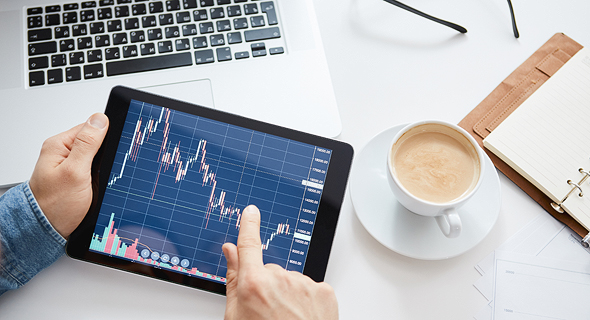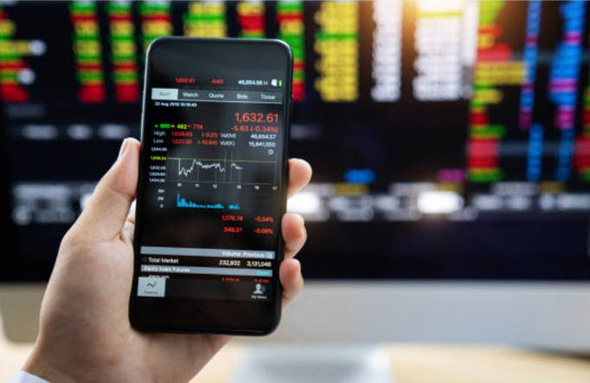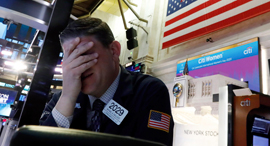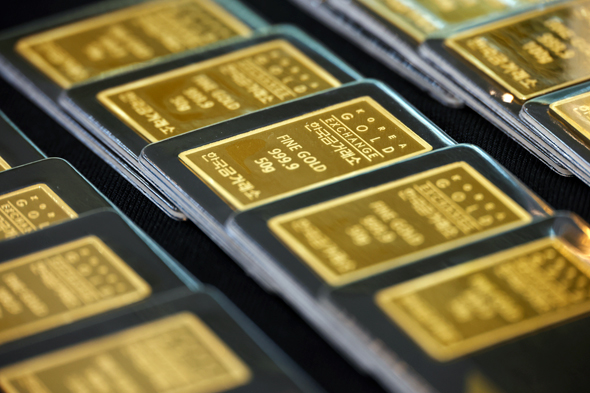Every morning when she sits down to work at her computer, Tamara Direktor, CEO of investment management company Psagot Securities Ltd., cannot believe her eyes. What she sees is a huge number of new accounts for trading in securities that were set up since she last shut down her computer the night before.
“It started in March,” Direktor told Calcalist in an interview. “There was a sudden boom and the number of accounts opened every day was 10 times the usual number,” she said. “We weren’t even advertising, people just Googled ‘stock trading.’ The number of accounts has since quintupled and the daily volume of trade has tripled,” she added.
 Apps make trding on the stock market far more accessible/ Photo: Shutterstock
Apps make trding on the stock market far more accessible/ Photo: Shutterstock On the other side of Direktor’s computer screen are people like A, a 40-year-old tech worker from central Israel, who is married with two children. “During the 2008 crisis I was too young and missed my opportunity,” A told Calcalist. “I got into the market later, in 2010, but in the past few years I felt like everything was a bubble,” he said.
When things started to shake due to the coronavirus (Covid-19) outbreak, in March, A decided he cannot let this crisis go to waste. “I immediately took a course to learn how to identify trends, when to get in, and when to get out and have been very active since,” he said. “At the height of the crisis, I spent hours in front of the screen every day.”
Where do you get the money to invest in the exchange?
“I took some of the money we were saving to buy a house. I told my wife we had to be more present on the stock market. Recently, she started to develop a taste for it too. She is not actively trading yet but she reads financial newspapers and we talk about investment and stocks. We generally came to the conclusion that the world is going towards a very deep crisis and the recession is going to be worse than it was in the 1930s, with hyperinflation and the bursting of all the bubbles we were seeing over the past few years.”
So you gave up on buying a home so that you could trade on the stock market?
“We won a raffle to participate in a government program for an apartment priced at 30% its market value but we are still debating whether we should go for it because I believe prices will continue to go down.”
What types of stocks do you invest in?
“I steered clear of tech stocks from the get-go. I was deep into pharmaceutical companies that are working on a Covid-19 vaccine, but I pulled out. Now, I am mostly concerned that the value of currencies, especially the U.S. dollar, will depreciate, so I started buying gold, silver, and other metals.”
You sound very relaxed. Are you emotionally prepared for the possibility of losing the money?
“I believe in commodities like gold and silver. Even if it goes down I am here for the long run. I won’t touch my portfolio for at least two or three years.”
 Wall steet in the palm of your hand. Photo: Bloomberg
Wall steet in the palm of your hand. Photo: Bloomberg Like A, thousands of young men in Israel and around the world are now storming the securities markets. Without sports broadcasts, excess adrenaline seems to flow in two main directions—video games and stock trading—and the line between the two is consistently blurred.
“These guys spend all day in front of the screen, buying and selling or chatting on Whatsapp and Telegram groups,” Rebecca Elgarisi, the head of advising and research at Israel’s Bank Hapoalim, told Calcalist. “My neighbor, who is less than 30, keeps telling me about his friends who will not shut up about shares, even if they only invested several thousands of shekels,” she added.
Since the beginning of the coronavirus crisis, micro-investing mobile app Pepper Invest has seen the number of daily deals quadrupled, according to Michal Kissos Hertzog, CEO of Pepper. Pepper is the digital bank subsidiary of Israel’s Bank Leumi.
Pepper Invest’s app allows users to invest small sums, buying fractions of shares of the likes of Amazon, who sell for over $3,000 per share. “Eighty-five percent of traders on Pepper Invest are under 36 and the average deal stands at $585, but there are also those who buy NIS 50 (approximately $15) worth of shares,” Kissos Hertzog said.
One of these micro investors is 31-year-old Moshe Gutman from ultra-Orthodox (Haredi) Tel Aviv suburb Bnei Brak, who recently completed his training to become an insurance agent. “I set up a Pepper account and put in NIS 10,000 (approximately $2,900),” Gutman, who is married and a father of three, told Calcalist. “At first, I only traded in indexes, such as Nasdaq and S&P 500,” he said, “but I am a member of a lot of Facebook groups focused on investment and so I got into shares as well,” he said.
“I mostly buy shares by large American companies such as Apple or Amazon, I need to know what the company does,” Gutman said. “I mostly wanted to know how I will be able to withstand red screens, to figure out how much I am willing to lose,” he said. “On paper, it is easy to say the market always rises in the long run, but I have not yet had the opportunity to see what happens when it goes down,” he explained.
 Stocks traded on the Nasdaq. Photo: Getty Images
Stocks traded on the Nasdaq. Photo: Getty Images Gutman is not the only one who is trying to test his resilience to downward trends that do not seem to be coming. The question remains, what will happen to these traders when they do arrive.
“Over the past few months there are a lot of new investors out there and their questions are basic and reveal just how little they know,” one trading veteran, who runs a Telegram group of over 5,000 investors, told Calcalist on condition of anonymity. “They are weak and they will panic with the first market correction,” he said.
An example of what this panic might look like can be found in the tragic death of 20-year-old Illinois resident Alexander Kearns, who traded in securities on the popular mobile app Robinhood.
During the second quarter of 2020, the app’s developer Robinhood Markets Inc.’s trading income doubled, reaching $180 million in order flow revenue, after it saw 3 million new users register for its service during the first quarter of the year.
In June, Kearns, who was one of those new users, committed suicide, seemingly due to confusion over his balance on the online trading app. According to a letter he left behind, Kearns, who had no source of income, believed he had lost $730,000 on the platform, but in actuality had a balanced account. Due to a non-user-friendly interface, to the inexperienced trader, the account appeared to have a frighteningly negative balance.
“The market is volatile and dangerous and if you hit refresh on your portfolio every five minutes, you shouldn’t even get into it,” a veteran investor who spoke on condition of anonymity told Calcalist. “With Covid-19, a lot of young people out there invest NIS 50,000 (approximately $14,700) and they quickly turn into NIS 150,000 (approximately $44,000),” he said. “We haven’t seen any significant drops since the crisis started, but there are those who will not even be able to bear seeing their investment go down from NIS 50,000 to NIS 48,000 (approximately $14,000),” he explained.
This tide following Covid-19 is not unique to micro-investments and manifests itself in big numbers as well. A report published last month by the Tel Aviv Stock Exchange (TASE) indicates the number of new accounts in Israeli investment houses jumped by 55% in the first quarter of 2020, compared with the same period last year. All in all, during the first six months of the year, around 77,300 accounts were opened, 28% of them in March alone.
Even if many of the accounts hold just several tens of thousands of shekels, it is worth noting that, according to data from the Bank of Israel, the public has a trillion shekels (approximately $293.5 billion) in bank accounts and deposits, so investment houses are viewing Covid-19 as just the tip of the iceberg. The exchange itself is also benefiting from the increased interest in stocks and its market capitalization has jumped 39% since the beginning of the year.
 Red screens on the Tel Aviv Stock Exchange in March. Photo: Yair Sagi
Red screens on the Tel Aviv Stock Exchange in March. Photo: Yair Sagi This trading rush is very much reminiscent of the day trading craze of the late 1990s, just prior to the burst of the dot-com bubble. Back then, the technology was still in its early days and instead of buying and selling through a mobile app from the comfort of their homes, those who got hooked would visit special trading rooms.
As Nasdaq crashed in March 2000, most of the money invested by day traders got erased. Since then, day trading remained a fringe phenomenon, especially as market volatility subsided and the general trend was positive.
Covid-19 reignited this flame but with one significant difference. “These are different people than those who flocked the day trading rooms in 2000 in terms of depth and knowledge,” Elad Burstein, a senior vice president of brokerage services at Excellence Investment House Ltd., told Calcalist. “Today, it is no longer taxi drivers or people exchanging information at the synagogue,” he said. “We are seeing independent investors using patterns similar to those used by bigger entities. For example, they are not buying a whole share at once, instead dividing the purchase into fractions to average out the cost.”
The people who set up the accounts are mostly men aged 35-45, Burstein said, and almost all of them say they were looking for an opportunity to enter the market since the 2008 crisis. “They have both knowledge and curiosity,” he said, “they know when companies publish their financial reports and they give us tips to improve our trading systems.”
Much like before, however, Burstein said, there is a lot of day trading going on as a share you bought yesterday could jump 15%-20% in one day, so many feel they should sell and turn an immediate profit.”
According to Elgarisi, this crisis is easier to understand than its predecessors. We are not talking about subprime, real estate, or other concepts that are hard for most of the public to comprehend, she explained. “With this crisis, everything is straightforward: there are no flights, you buy more at the supermarket, and you work from home,” she said.
“People understand these concepts. They feel like they have investment opportunities as well as access to information and young people today are sharing much more information about stocks than ever before,” Elgarisi said.
Burstein agreed. “There are a lot of Telegram, Whatsapp, and Facebook groups that focus on shares and it has become an acceptable topic for dinner table conversation,” he said. “Like Donald Trump who owes his presidency to Twitter and Facebook and not to CNN, the same thing is happening with stocks, whoever shines the brightest on social media also shines on the green screens at the exchange,” he explained.
Trading also became far cheaper for investors, who, in the past, relied on banks that charge hefty fees. Investment houses, on the other hand, charge significantly lower fees, making multiple transactions go down more easily.
Many brokers report the average portfolio starts out at NIS 50,000 (approximately $14,700) and Some investment houses even upped their minimal threshold from NIS 20,000 (approximately $5,900) to NIS 50,000 —which brokers report is the average volume of a new account—to be able to handle the demand. “One client told me ‘I’m putting down NIS 50,000 now so I can pay for the weddings of the three kids that I don’t have yet,’” Berstein said.
 Day traders rely on apps to folow the market. Photo: Getty images
Day traders rely on apps to folow the market. Photo: Getty images There is no single typecast for these new investors, Amit Gurion, head of the online trading department at Tel Aviv-based I.B.I Investment House Ltd., told Calcalist. I.B.I is one of the two biggest Israeli players in the field, alongside Meitav Dash Investments Ltd. “It’s true that Covid-19 attracted some investors that are still wet behind the ears, but they have better financial literacy because there is a lot more financial information available to them,” Gurion said.
While market volatility always incentivizes investors looking to turn a quick profit, the most important occurrence behind the Covid-19 investment fever had nothing to do with shares.
The turning point was in April, as oil prices dived into negative territory due
to decreased demand and lack of storage capacity. Suddenly, you did not have to know anything about economics or be interested in the stock market to realize that something out of the ordinary just happened. While the oil prices anomaly was difficult for the average Joe to monetize on, due to complex technicalities, it was a trigger, nonetheless.
“When the prices came down violently, people jumped at the opportunity,” Gurion said. “Young people suddenly realized it was a chance that only comes around once a century,” he said.
Much like in the 1990s’ day trading trend, we are seeing a hype around American tech companies, but, while the previous generation of traders looked for opportunity in the shares of small companies, today’s investors are looking at the juggernauts. As traditional industries—from aviation and tourism to oil—are crumbling down, anyone that has shifted to working from home realizes that without Apple, Netflix, Google, Amazon, and Facebook, life at a time of social distancing would be nearly unbearable.
The quarantines, furloughs, and remote work from home have pushed the U.S. stock market upwards in an unprecedented trajectory. Nasdaq’s index, which is loaded with tech shares, jumped over 20% since the beginning of the year and is at an all-time high. The S&P 500 index is also significantly higher today than it was when Covid-19 first appeared. These upward trends have brought Apple to a market cap of nearly $2 trillion and Amazon to $1.5 trillion.
Israeli companies are not piquing that level of interest but are also showing signs of revival. This is evident by TASE’s average daily trade volume, which rose from NIS 1.3 billion (approximately $380 million) in 2019 to NIS 2 billion (approximately $587 million) in 2020.
Estimates say that while the volume of investment activity outside of Israel quadrupled this year, it has tripled within the country. For most investment houses servicing independent investors, 70% of activity was outside of Israel.
According to Zvi Rabin, founder and CEO of Israel-based iRMedia, which specializes in investor relations, Israeli companies are just now starting to realize they need to stay in touch with investors. “Last year,” Rabin told Calcallist, “I couldn’t sell companies on the idea that they need an investor relations page on their website, I had to chase down every potential client. Now, when I pick up the phone with an offer, they tell me they were just looking to set one up.”
While investor relation webpages are a standard for U.S. companies, they were considered, at least until recently, redundant for Israeli companies whose shares were traded solely by institutional investors.
“There is a lot of information about each company on the stock exchange’s website but there is also a lot of intricate legal material and people want to get their information in headlines,” Rabin said. “The most viewed pages on any company’s website today are the management and board pages, followed by financial reports and investor presentations and messages,” he added. “In the past, the traffic to these pages would amount to just several hundreds of users a month but, in recent months, it rose to 7,000-8,000 unique users a month,” he said.
This parallel universe of a rare tide on the exchange in the midst of an unprecedented financial crisis is not solely for the young. Veteran investors are also finding it hard to resist the temptation to increase their activity in light of all those green screens.
Boredom, brought about by social distancing and intensified by the increased risk leading many elders to stay home regardless of regulation, has manifested itself in a new type of night-time activity.
“During the day, it is very boring but around 9 p.m. things start to get interesting,” Shmuel, a 70-year-old retired banker, told Calcalist. Before Covid-19, Shmuel and his wife traveled a lot, but since the outbreak, they have been locked away in their home in central Israeli town Rishon LeZion.
“I chat about stocks with two or three friends every night,” Shmuel said. “Together we follow the trade until market close in New York, at about 11 p.m., Israel time,” he said.
Shmuel was always active on the exchange but Covid-19 changed his level of involvement. Though he doesn’t make transactions on a daily basis he does so several times a week, compared to just a few times a month before the crisis started. The nature of his activity also changed.
“When the crisis started, I began to think about what I was doing and I realized that most of the industries I was investing in were problematic so I shifted most of my portfolio towards cloud, computing, and medical equipment companies, mostly stuff I know and use,” Shmuel said.
When the crisis started just 70% of Shmuel’s investments were in U.S. companies but this has since climbed to 90%. “I’m frustrated with Israel, the only Israeli shares I’m still somewhat interested in are cross-listed,” he said.
 Will the new traders know how to cope with inevitable corrections?. Photo: AP
Will the new traders know how to cope with inevitable corrections?. Photo: AP Like his younger counterparts, Shmuel also has an active Whatsapp group where pensioners discuss and analyze stock and investment opportunities. “When the crisis started, they wouldn’t listen to me and fled the exchange,” he said. “Anyone that has been through 2008 has a stronger heart. I, for one, am able to withstand quite a lot of losses,” he added. “In March, I had a 30% balance but now I am 25% positive.”
In the past few weeks, we are seeing more and more people discovering precious metals, an investment prospect that was until recently only familiar to professional investors.
Gold prices are at an all-time high but so are stock exchanges. This seems to contradict the economic theory that when investors expect the traditional stock markets will crash due to a weakening economy, they turn to gold as a safe haven. Now, we are starting to see analysts claiming the regular rules of economics no longer apply and calling gold the new tech.
 Gold prices are rising alongside the stock market. Photo:Reuters
Gold prices are rising alongside the stock market. Photo:Reuters All of these signs, however, point towards an irrational movement in the stock markets and irrational movements tend to end bitterly.
This bitter end is unlikely to come within the next few months though. It is safe to bet, with a high level of probability, that at least until November and the U.S. general election, the markets will, more or less, maintain their current state.
The reason is that Trump realizes that with the crumbling economy and a 10% unemployment rate, he has very few cards left up his sleeve to impress his base voters, other than positive returns on their investment portfolios. If the collapse of Main Street also reached Wall Street, he would have no chance of reelection.
So, much like Prime Minister Benjamin Netanyahu is doing in Israel, Trump will likely continue to print money and throw it at citizens that will put it back into the stock market, to create the illusion that things are not so bad.
After the election, whatever the result, this motivation will decrease significantly and the new traders will finally get a chance to test their resilience to losses and red screens.
“Day Trading” Investments Securities Coronavirus Covid-19


Leave A Comment?
You must be logged in to post a comment.